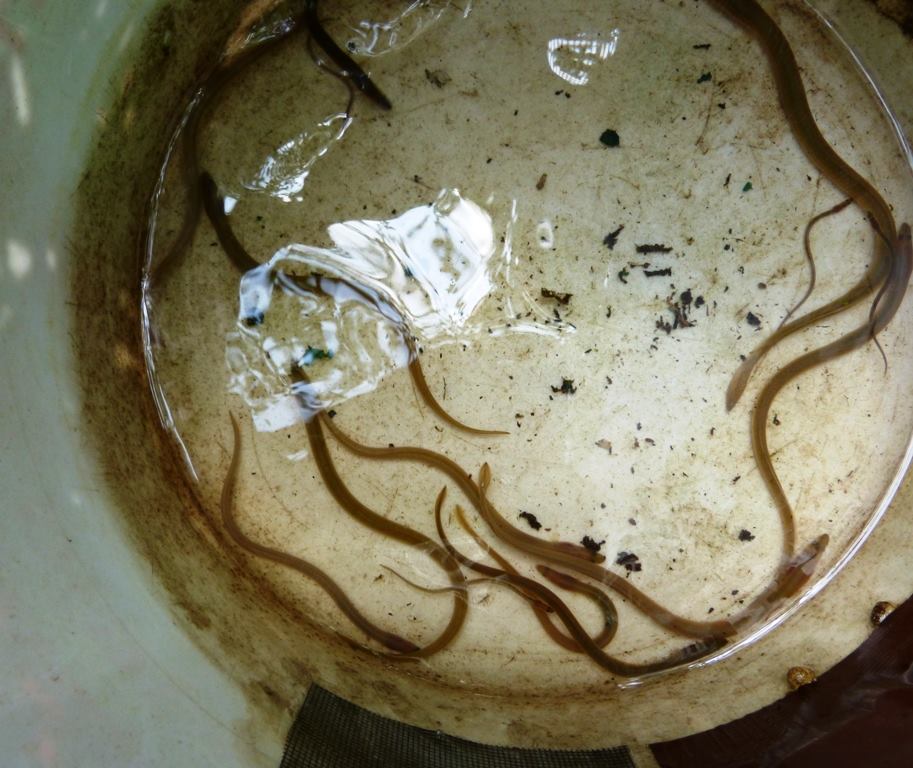
Juvenile American Eels (Photo:NYSDEC)
More than 700 #citizenscience volunteers helped protect the Hudson River Estuary this spring by catching, documenting, and releasing over 90,000 juvenile American Eels, a species important to conserve that also helps scientists understand habitat losses or gains, shifts in the food web, and other ecosystem changes.

Juvenile American Eels (Photo:NYSDEC)
The research project is based on American Eel monitoring efforts from coastal Maine to Florida. Volunteers catch and count these translucent, two-inch-long creatures, record tide and temperature data, and typically release them above dams or waterfalls for easier access to habitat. Data collected by the Hudson River’s growing number of citizen scientists have aided efforts to connect or reconnect streams and lessen the negative impacts of watershed barriers.
This marks the 10th consecutive year of the volunteer effort, begun by the Hudson River National Estuarine Research Reserve and New York State’s Hudson River Estuary Program, which has caught and released more than one-half million eels over the decade. The partners coordinate the ongoing effort with the Water Resources Institute at Cornell University, New England Interstate Water Pollution Control Commission, and dozens of other partners.
This post originally appeared on the NOAA Education and Outreach Facebook page.